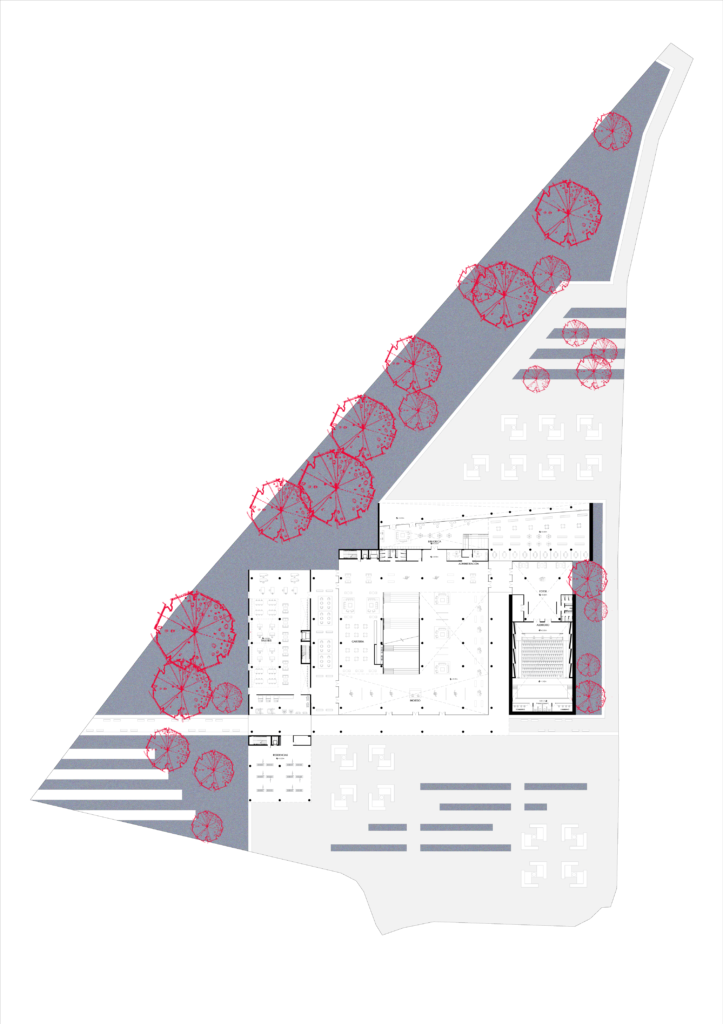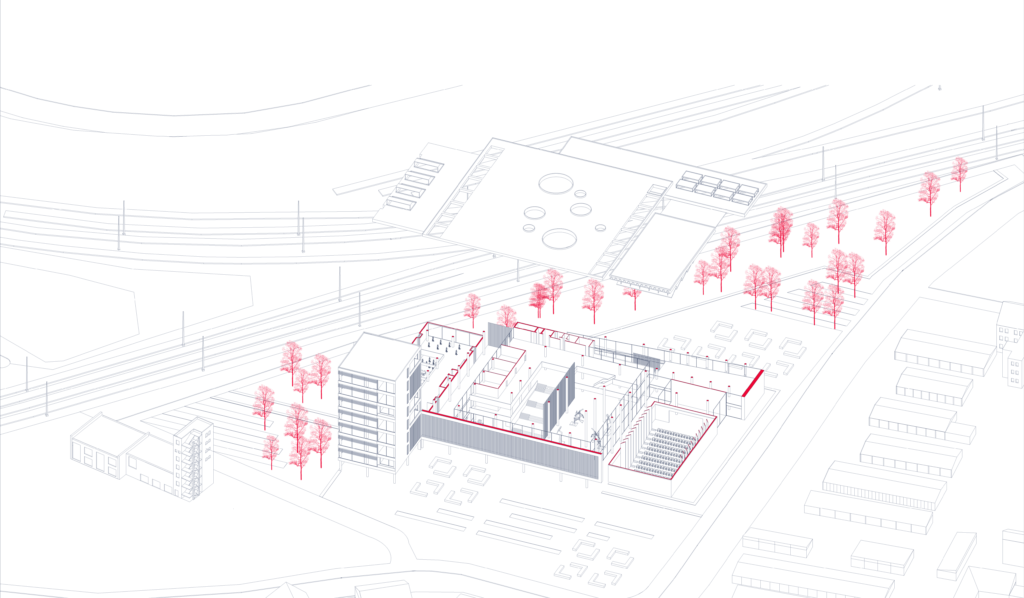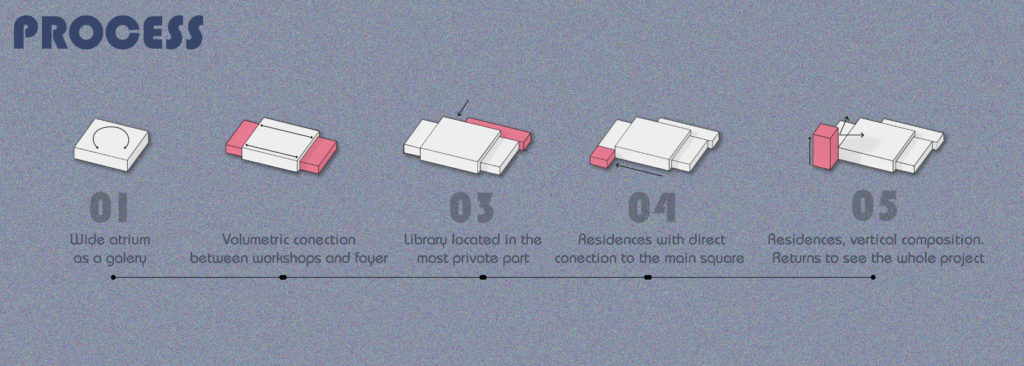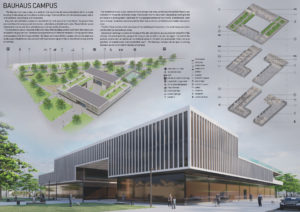Architecture, like art, becomes timeless when traces of time do not deteriorate it, but rather enrich it (Castro,2019) The Bauhaus since 1919 has stood out for its revolutionary ideas, which crossed out the dividing line between artists and artisans allowing to have a convergence of ideas that gave birth to a new axis of thought that unfortunately, it lost its essence over time. But what if it hadn’t been interrupted?
The new Bauhaus 2021 seeks to return to the history of a school of artists and craftsmen, where the lines that separated the disciplines simply did not exist. A place where art and everyday living converge into one. Where disciplines are not individualized, on the contrary, they form a unit of knowledge and experiences.
We seek timelessness, through our key design concept “interconnectivity”. This concept applies to all components and functions at all levels of the building, through a wide atrium that links visually, programmatically, and logistically the four separate volumes and becomes the heart of the Bauhaus, where students and visitors can meet. Large skylights are proposed to maximize the amount of light during the day and the facades create a composition of contrasts between glass and concrete with certain wood details, providing private spaces and others that relate directly to the landscape. The building and its exterior spaces generate a creative and explorative atmosphere. The experience that the user will live in the building will reflect the fundamental axes of Walter Gropius, which were once interrupted and will now be continued.









